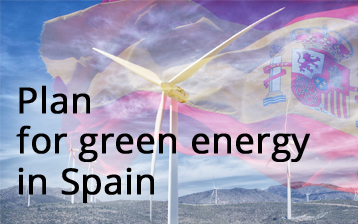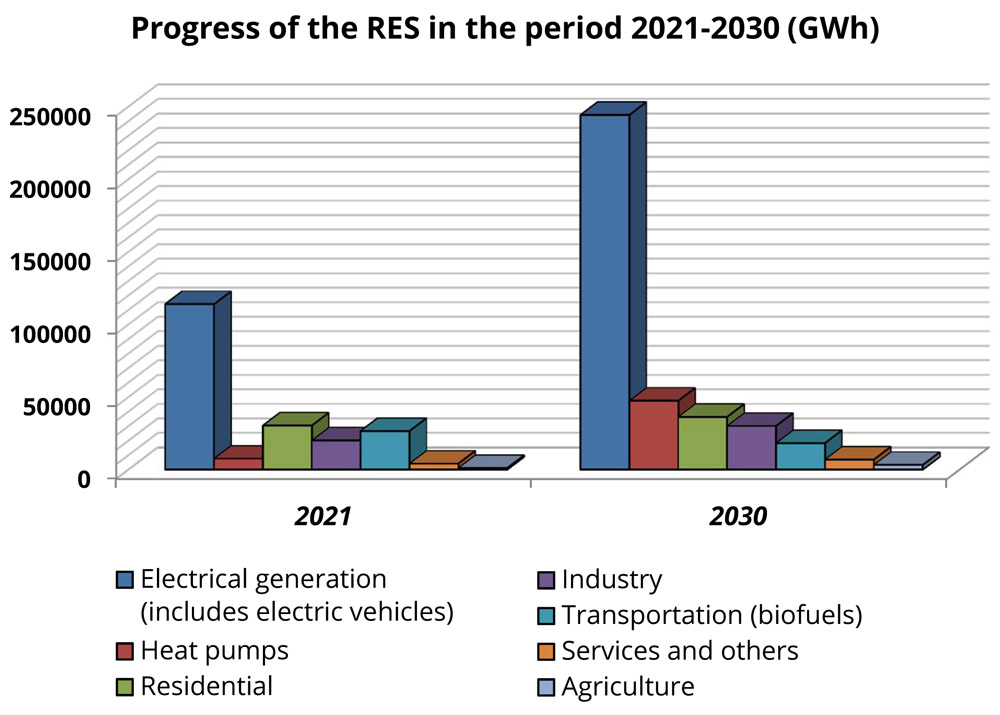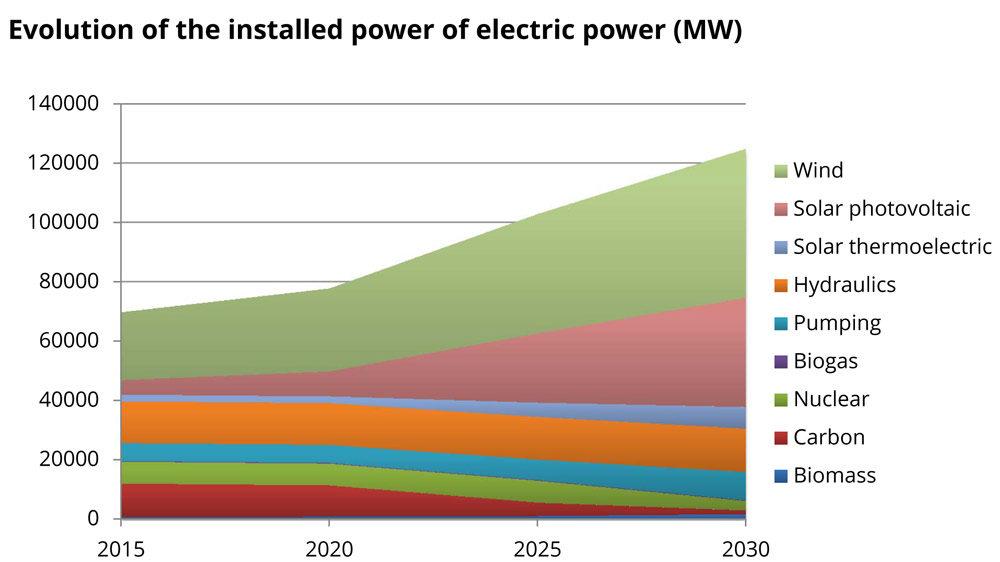With the new plan for green energy, Spain has outlined a series of strategies, in order to be able to reach the binding target of the European Union for 2030 of 32% of RES in the final gross consumption of energy. In short, the presence of renewable sources in the energy needs of this country will reach 20% by 2020 and 42% by 2030.
Solar PV, one of the main renewable sources of the new plan in Spain
The most significant growth in the renewable energy sector will be in the period between 2021 and 2030. During these years, many sectors of the Spanish economy will see the share of RES increase considerably, for example:
- Electricity generation (includes electric vehicles): increases from 9,793 to 20,998 ktep.
- Heat pumps: increases from 650 to 4,076 ktep.
- Residential: increases from 2,607 to 3,123 ktep.
- Industry: increases from 1,721 to 2,585 ktep.
- Transport (biofuels): it is reduced from 2,283 to 1,568 ktep.
- Services and others: increases from 355 to 596 ktep.
- Agriculture: increases from 94 to 278 ktep.
In order to guarantee significant growth in these sectors of the economy, Spain needs to increase the amount of installed power for many renewable sources on the market. As can be seen from the following graph, solar PV and wind energy are those that, in the coming years, will have a greater impact on final energy consumption, and in particular on electricity production. Sectors such as nuclear and carbon, however, will tend to influence this type of industry less and less, so as to reach 74% of the renewable quota by 2030 for this sector.
How does Spain think of achieving the binding targets of the EU?
Regarding the development of renewable energy technologies, the Spanish Government will establish a multi-year auction program to facilitate investments in the various sectors.
In addition to this, to increase the share of RES in gross final energy consumption, this country wants to incentivize both technological innovation in the sector and self-consumption.
In the first case, for example, there are many technologies (for example, offshore wind energy) which, although not yet competitive, have great potential. For these technologies, this country proposes a specific tender calendar with a reduced energy volume, to propose “demonstration” projects. Depending on the specific needs of each case, Spain could add public funding to these tenders.
Secondly, this country intends to increase the share of self-consumption, both in the residential sector and in the tertiary sector and in the industries.








